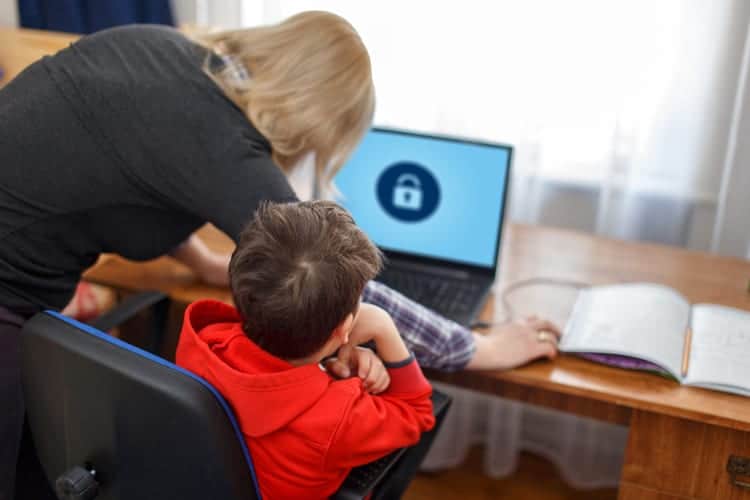
Keep Computers in a Public Space

Make sure that your kid doesn’t have a private computer that they can lock, and that any computer time they have online is in a public space, within eyesight.
This approach becomes a little more difficult if you give your kid a smartphone or tablet. The easy solution to this is to not give them such things until they are older. If you must, however, then make sure they are not online in their own room on any device.
- The manual approach means that you just get on the computer and check things like browser histories, cached images, and downloads. This is a good thing to do regardless, but kinds with a little knowledge can clear these out relatively easily.
- The software approach is to install tracking software on your computer, like a network monitor or a keylogger, to track your kid’s online activity. This can be much more effective if you are trying to catch your kid in the act, but it is also a kind of ethical gray-area, depending on how you look at it (especially if you don’t tell them you are checking in on them).

In either case, you can tell your kid that you have this software in place to discourage certain activities, or you can put them in place in hopes of catching them in the act. The former seems more helpful than the latter, and none of this helps, ultimately, if you don’t have access to the computer (as in, if they have their own mobile device).
Maintain an Open Line of Communication About Online Activity
The above three items are relatively straightforward, mechanical approaches to the issue of web safety. But, as with anything, kids can find a way around many of the solutions we put into place. And truth be told, we can’t hover over their shoulders forever.
So, you always need to have an open line of communication between you and your child regarding their online activity:
- You should always go over the rules of the Internet in your home. Even better, you should have an open conversation about these rules and why they are in place, and how they keep your child safe.
- You should always talk with your child about their browsing: who they talk to, what sites they visit, and so one. This isn’t an interrogation: be authentically interested in what they are doing.
- Following #2, create an atmosphere in which your child feels comfortable talking with you about what they do online. If your kid runs into something that worries, scares, or confuses them, they are more likely to share with you if they feel they can do so in safety.
Always Be Open About the Dangers of Online Activity
Finally, talk with your kids about the dangers of certain online activities. This isn’t a fear-mongering tactic, but it gets to the heart of many young adult experiences online.
We often think about online safety as avoiding data or identity theft or avoid having your account information stolen. These are significant threats, sure, but today’s generation faces a whole new level of anxiety online. Predators, toxic online communities, and cyberbullies are becoming more regular in places that they weren’t before. Seemingly innocuous sites like Facebook and Instagram can quickly become open communication channels where your kid can be harassed, bullied, or stalked.
Share these concerns with your kid in an open manner. Don’t speak in life-or-death terms, or try to scare them, because kids think they are invincible until something happens. Talk to them with respect and understanding and teach them about the ways in which they can avoid these issues. And, when in doubt, remember: always keep the lines of communication open.
Keep Your Kids Safe
Honestly, with a combination of clear rules, monitoring, and open communication, you can have a good handle on your kid’s activities online. Nothing is 100%, however, so your best bet is to create an environment of trust and understanding, so that if something unsafe happens online, your kid knows that they can avoid it. Or, if nothing else, they can come to you.
